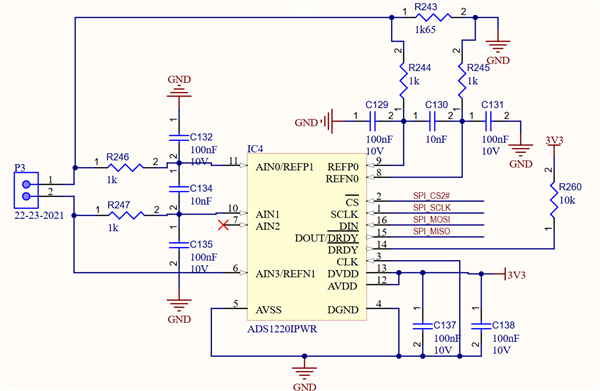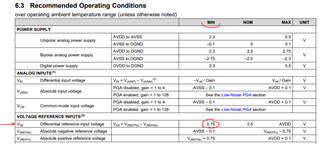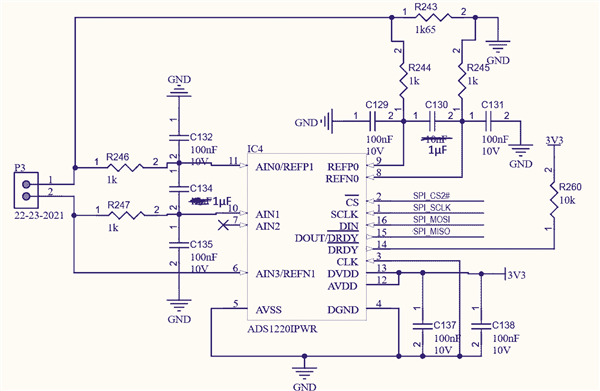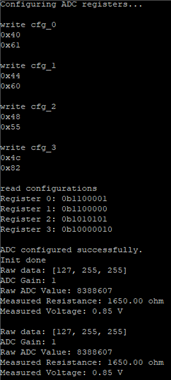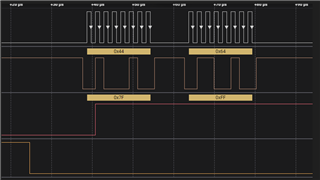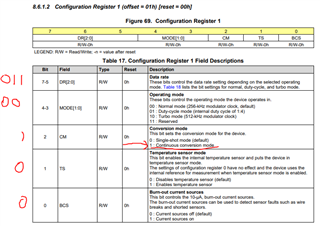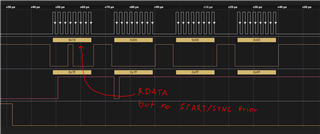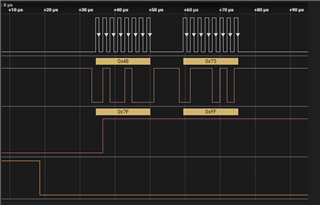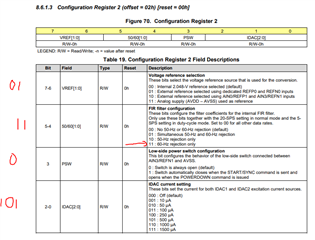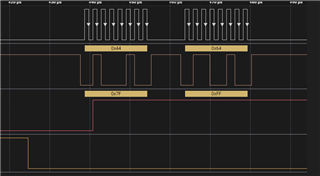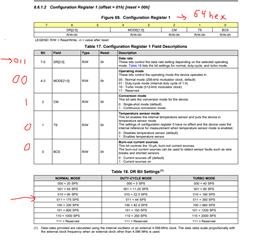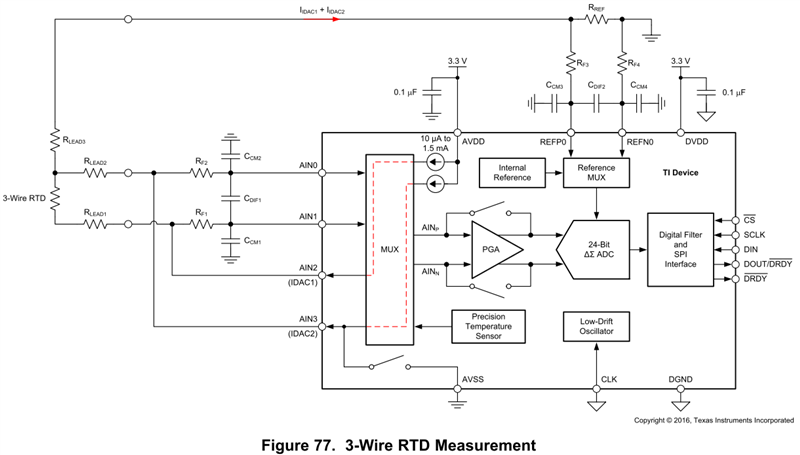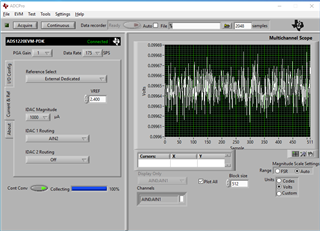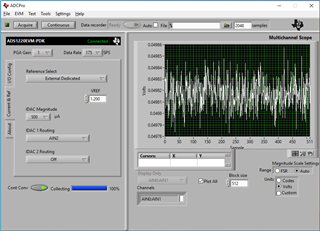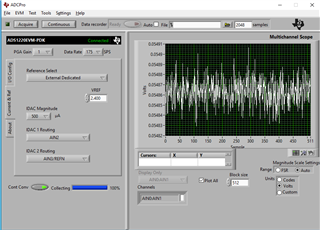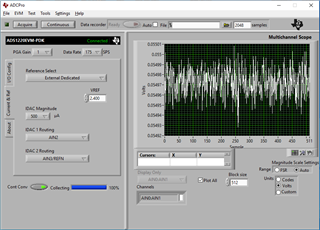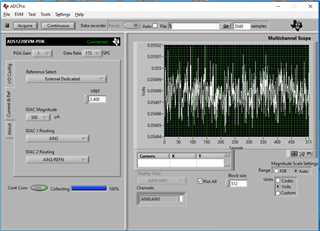Tool/software:
Hello,
We are having problems with our ads1220 Two-wire RTD connection. We only get the full-scale output from ads1220 with PT100 connected.
We can send the configurations to our adc and read them via SPI, so we can be sure that the problem is not in SPI. We are using these configurations:
CFG0_PGA_BYPASS_OFF = 0x0
CFG0_GAIN_2 = (0x1 << 1)
CFG0_MUX_P1N0 = (0x6 << 4)
CFG1_BCS_OFF = 0x0
CFG1_TS_OFF = (0x0 << 1)
CFG1_CM_SINGLE_SHOT = (0x0 << 2)
CFG1_MODE_NORMAL = (0x0 << 3)
CFG1_DR_STAGE4 = (0x3 << 5)
CFG2_IDAC_250UA = 0x4
CFG2_PSW_ALWAYS_OPEN = (0x0 << 3)
CFG2_FIR_BOTH = (0x1 << 4)
CFG2_VREF_EXT_REFP0_REFN0 = (0x1 << 6)
CFG3_DRDY_DEDICATED = (0x0 << 1)
CFG3_I1MUX_AIN3 = (0x4 << 5)
CFG3_I2MUX_DISABLE = (0x0 << 2)
cfg0 = ADS1220.CFG0_PGA_BYPASS_OFF | ADS1220.CFG0_GAIN_2 | ADS1220.CFG0_MUX_P1N0
cfg1 = ADS1220.CFG1_BCS_OFF | ADS1220.CFG1_TS_OFF | ADS1220.CFG1_CM_SINGLE_SHOT | ADS1220.CFG1_MODE_NORMAL | ADS1220.CFG1_DR_STAGE4
cfg2 = ADS1220.CFG2_IDAC_250UA | ADS1220.CFG2_PSW_ALWAYS_OPEN | ADS1220.CFG2_FIR_BOTH | ADS1220.CFG2_VREF_EXT_REFP0_REFN0
cfg3 = ADS1220.CFG3_DRDY_DEDICATED | ADS1220.CFG3_I1MUX_AIN3 | ADS1220.CFG3_I2MUX_DISABLE
Here is our connections.
